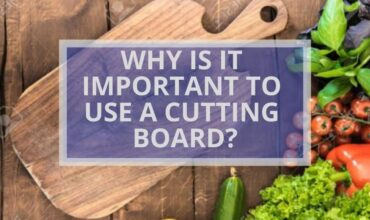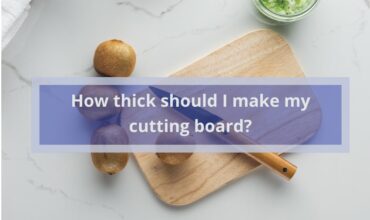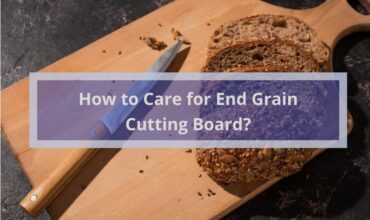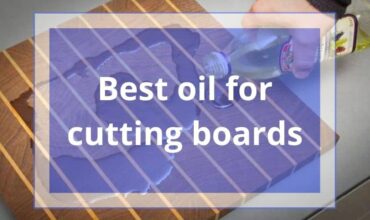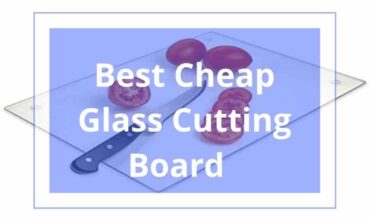You’ve got everything you need to make a super delicious recipe; your ingredients and your sharp knife, but you’re missing one thing: a cutting board!
Though cutting boards are commonly overlooked, there are various factors to take into consideration when selecting the best chopping board for your kitchen.
The aesthetics, the feel, and the durability are all important factors to consider, and that’s what we will be covering in detail in the next few lines.
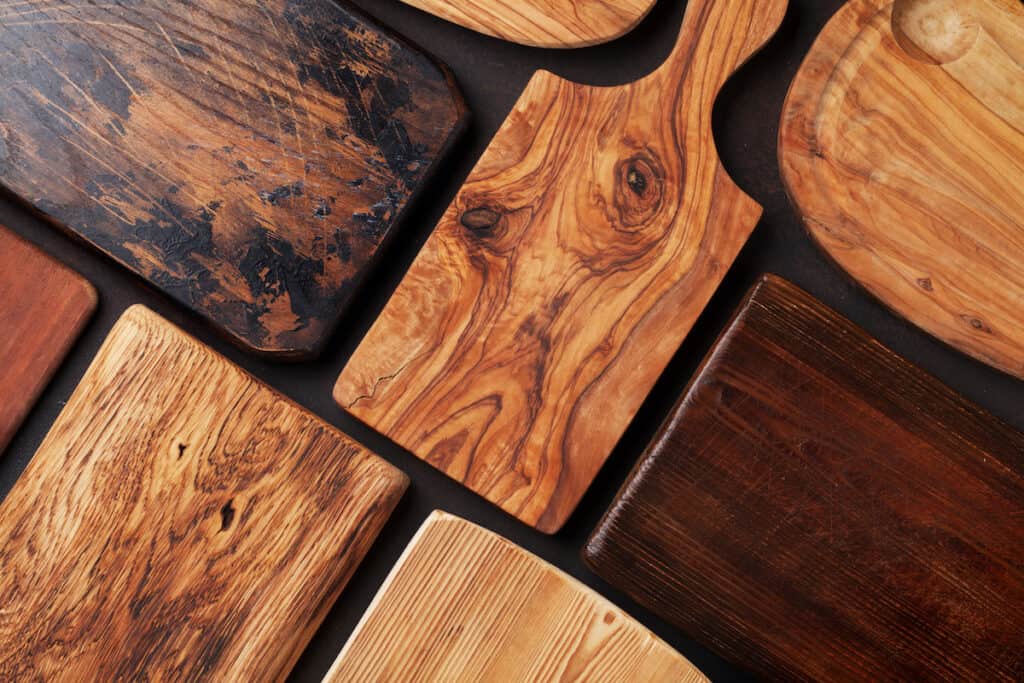
Here is how to choose a cutting board that makes sense for your lifestyle as well as your budget.
How to Choose a Cutting Board?
What is the Best Material for a Cutting Board?
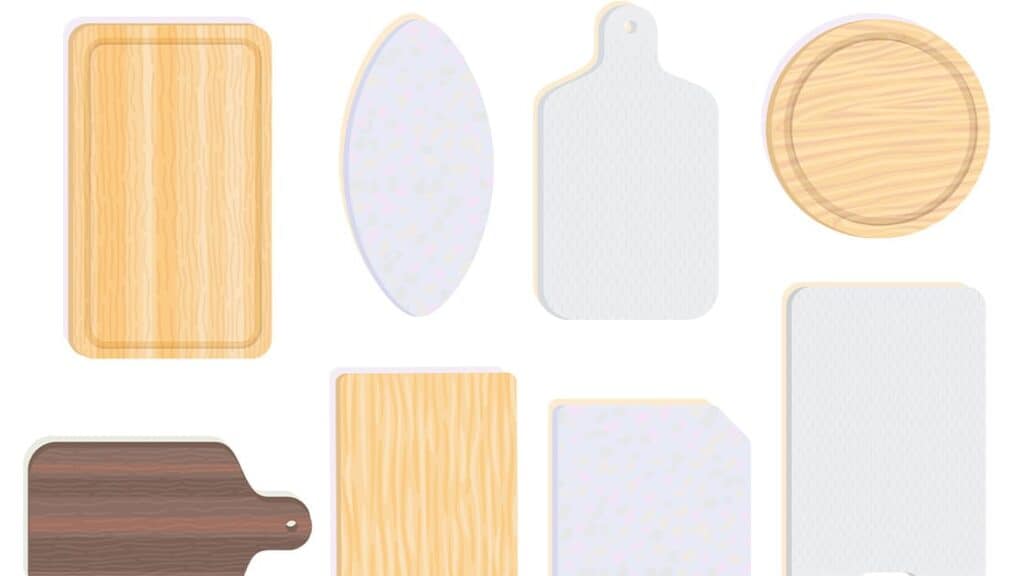
The main factor to consider when choosing a cutting board is the board construction, as the materials won’t only affect the aesthetics of the board, but also the degree to which it will age, whether it begins to develop odors or stains, and also how sharp and damage-free your blades will stay.
Nowadays, there are four most popular choice of materials, which are wood, rubber, plastic, and wood fiber composite cutting boards.
You may also come across cutting boards that are made of glass or ceramic, but under no circumstances should you buy a prep board made of glass or ceramic, the reason is ceramic and glass boards will ruin your expensive knives sharp edges.
It is also not recommended to use wood composite boards because they are hard enough to dull knife, if not completely damage your high-quality kitchen knives.
Famous knife makers also claim that the boards manufactured of exotic woods, such as a teak cutting board and bamboo cutting boards, can have similar knife-damaging properties. And they are frequently chosen by board markers just for their visual appeal, not utility.
So, it is pretty obvious now that the best chopping board materials are domestic wood and rubber boards. And both have their own pros and cons.
Wooden Cutting Boards
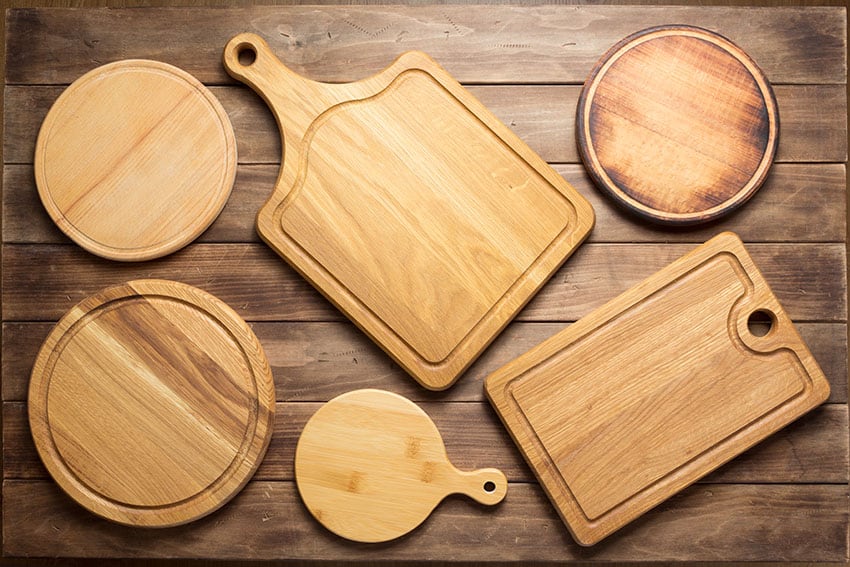
Advantages
Wooden cutting boards, particularly premium end-grain cutting boards, are generally visually attractive.
The grain in the wood grain boards is aligned so that it runs vertically down, toward the underside—which doesn’t only make them look good, but also creates a smooth surface, which helps to maintain the knife edges and to keep them sharper for a longer time.
Long grain type of wood cutting boards, in which the grain keeps running horizontally from one edge of the board to the other, have a harder surface and are less elegant, but they are still an excellent choice.
It is worth mentioning that wood cutting boards can also last for extended years, and even decades if you provided extra care.
Disadvantages
The disadvantage of wooden boards is that they are basically living products that will depend largely on their surroundings, in other words, they can wrap or spit along their streams when exposed to excessive moisture.
Strongly pigmented foods, such as beets, can easily stain them, and they can absorb lingering odors, such as onions. Wooden boards are also more expensive.
However, if you want a beautiful board that you’ll be proud to show off in your kitchen and have no problem pampering a little, wood is a good option.
Rubber Cutting Boards

Advantages
On the other hand, in most restaurants, rubber boards are the preferred cutting surface.
While thin, plastic cutting boards chip and mar easily, solid rubber boards are fairly affordable, long-lasting, easy to clean, gentle on knives, lightweight, and can even be refinished with abrasive paper based on what you buy.
Disadvantages
They are generally basic in looks, if not downright ugly at times, but for many users, the pros outweigh the cons.
If you don’t care about appearances, rubber is an ideal buy, it is also the best choice for people who live in a humid climate, as even low humidity can warp wooden boards.
Also check, Best Material For a Cutting Board
What Size Cutting Board Should I Buy?
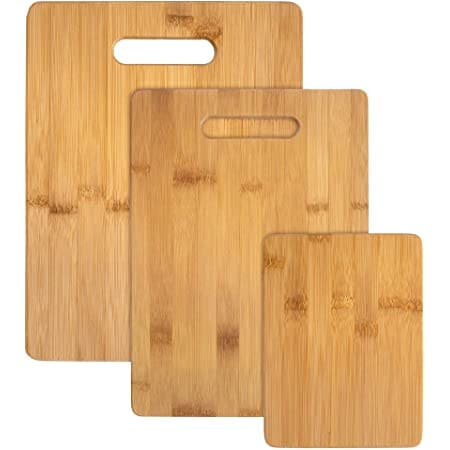
Let me tell you that the size of your lovely cutting board is so important. an extra-large and wide board will offer you a big room to easily prep meals.
But in this case, you may face a storage problem and will find it hard to store your big board. on the other side, a small board will offer you convenient storage.
So you need to take accurate measurements of your sink before buying a countertop or over-the-sink board, especially if your sink is larger than standard kitchen sinks.
In brief, you have to choose the chopping board that suits your kitchen and personal preferences.
What is Most Sanitary?
When it comes to sanitation, many users think that plastic cutting boards are the most sanitary and safe options as they have a non-porous material that can’t absorb liquids and can be washed in the dishwasher, unlike wood).
But surprisingly studies and researches show that with frequent use, the surface of plastic scores, the plastic surface, gets rougher and rougher over time, becoming harder to clean, even in the dishwasher.
A study made at the University of Wisconsin showed that Salmonella, Listeria, and enterohemorrhagic Escherichia coli which produce food poisoning, are found on cutting surfaces made from many woods and plastic types.
However, all of the wooden boards outperformed the plastic ones, the reason is when the plastic scores and gets cut, it forms shelters for bacteria to hide and grow.
While, with wood, they found that 3 mins after sanitizing a board, 99.9% of the bacteria on the wooden boards dies.
Moreover, bacteria on plastic boards when left at a high room temperature overnight, they increase, whereas the wood did not be found with any bacteria on it.
To sum up, wood boards are the best sanitary option to make.
How Many Do You Need?
You will find that many boards in the market come in sets of various sizes. Just pick up the product that meets your needs. we recommend buying a wooden board set of two or three boards. to use one as a butcher block for cutting raw meat, and the other one for chopping veggies.
and you can use the last carving board as a cheese board. (if you kept it free from knife marks).
Also, read, Why is It Important To Use A Cutting Board?
Is it Knife-Friendly?
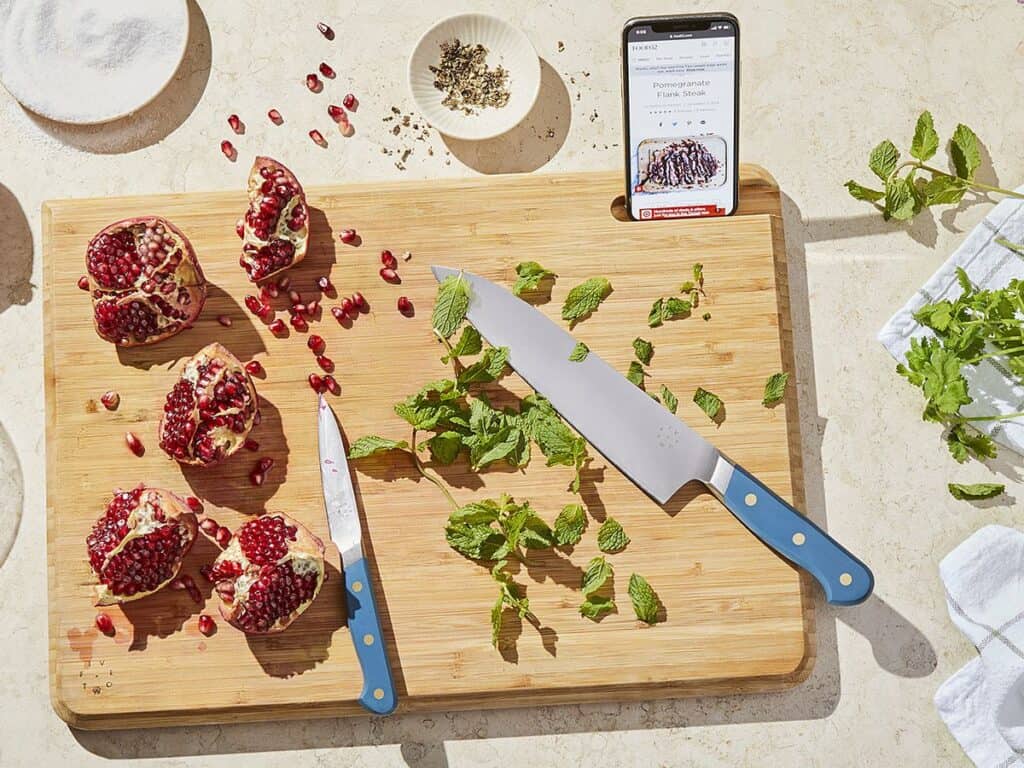
You should consider your kitchen knives razors before buying a new chopping board. you should pick up a knife-friendly material that won’t dull your knife blade.
Otherwise, you will find yourself buying a new set of knives from time to time or at least will always need to spend some time sharpening them.
When it comes to this point, a wooden board is the best option. It will be easy on the knives and won’t nick them over time.
Read more , Butcher Blocks vs Cutting Boards: What’s the Difference?
Is it Easy to Maintain?
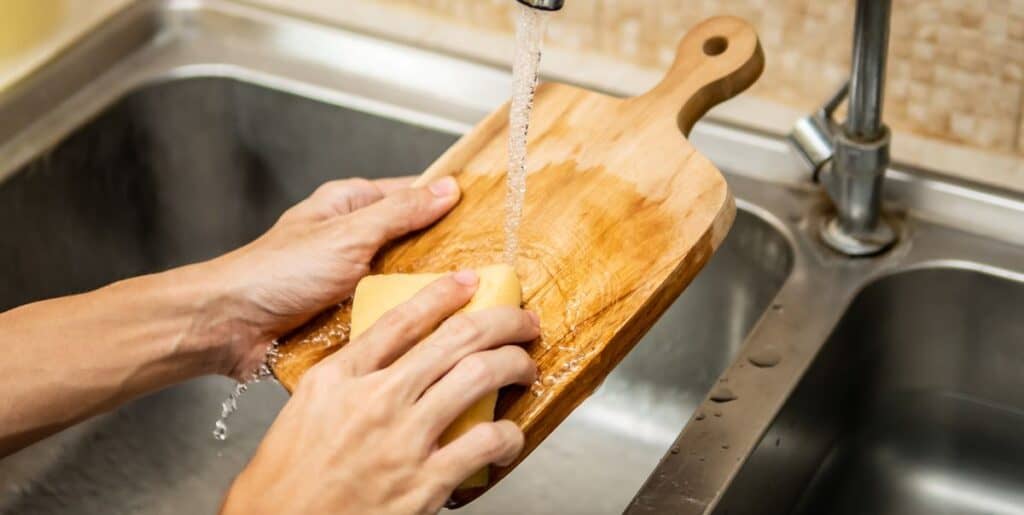
Many factors can cause your chopping board to stain over time, making cleaning up and sanitization such a basic factor you have to keep an eye on while buying a cutting board.
We highly recommend any wooden cutting board, especially natural wood cutting boards such as the bamboo cutting board or the maple wood one.
A bamboo board has antibacterial properties and is much easier to clean than a plastic board.
When you are cutting raw or cooked meat or fish, bacteria cling stronger to plastic and it will be hard to take it off even with soapy water. making cleaning up a really challenging process. So, when choosing a cutting surface, first make sure that it is a hygienic surface that will be easy for you to clean up and maintain.
Check also , What Is The Best Natural Oil For Wood Cutting Boards?
Is it Visually Appealing?
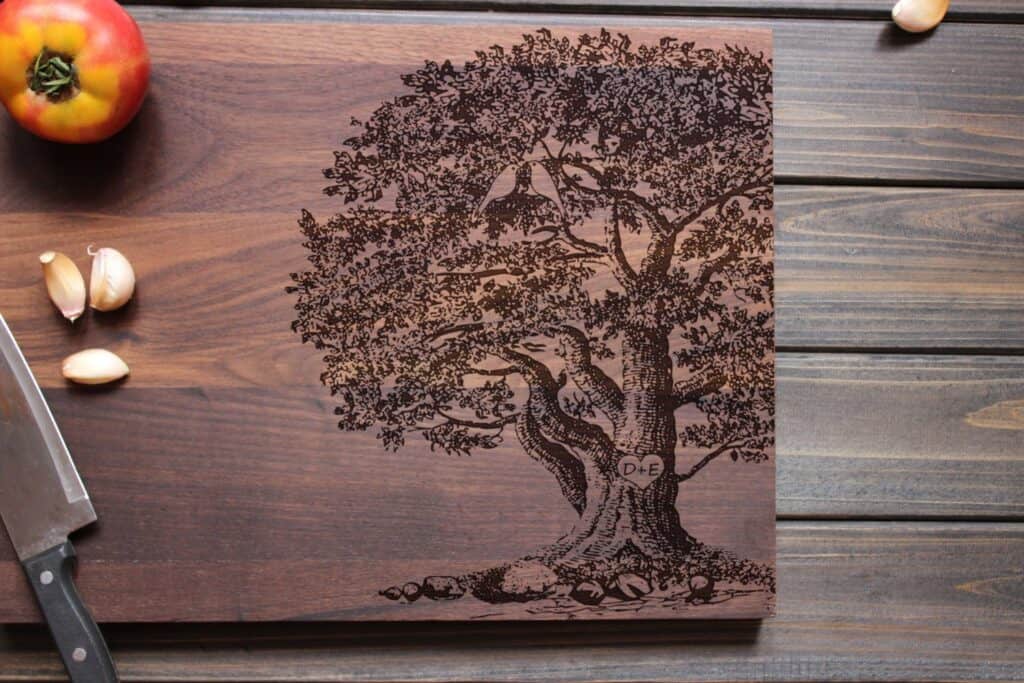
Nobody can neglect the aesthetic factor. who will ever buy a piece of kitchen equipment that ruins the décor or kitchen design?
Actually, when it comes to design, wood boards are the winners. They have a classic natural look that suits every design and theme.
That does not mean that you will never come across nice-looking plastic board options. No, they also have various looks and designs that you might find what you like among them.
What Does it Cost?
One of the most important factors to consider when buying a chopping board is price.
Ask yourself whether it is worth your money or if you can find another board higher in quality and less in price.
How Durable is it?
Durability is another factor you have to keep an eye on while buying a chopping board. The board should live in your kitchen for at least two years, and you don’t have to buy a new board every year.
Also read, End-Grain board vs. Edge Grain Board: What is the Difference?
Other Tips to Help You Choose the Right Cutting Board for You
- Use more than one kitchen board: If you are worried about cross-contamination, use a series of boards for different foods. Sets of color-coded boards are available, to make it easy for you to distinguish between them (green for vegetables and fruits, yellow for poultry, blue for fish, and red board for meat).
- Different sizes for different tasks: If you cook often, keep a variety of cutting boards on hand: you can set a small board for quick jobs like cutting cheese or fruits and a larger board for cutting winter squash or a whole chicken.
- Try to get sturdy cutting boards with non-slip silicone feet or rubbery feet on the bottom to keep them from sliding and to avoid any risks of accidents while cutting big food items. And in case you couldn’t find a board with a non-slip surface or grippy feet, you can lay a damp paper towel (damp cloth) under it.
- If you are tall, get thicker boards, this will elevate your work surface so you don’t have to bend over a lot. This can make a big difference in your comfort on days when you cook more often. On the other hand, if you are short by a cutting board that isn’t too thick.
- If you are sick of liquid dripping onto your counter space, then it is time to look for a board with a juice groove. This trench inside the cutting surface collects liquid when you cut too juicy fruits or veggies, like tomatoes or watermelon. Keep in mind that, a juice canal that is shallow or narrow isn’t going to hold much and is mainly made for appearance purposes.
- Avoid handles: Cutting surfaces with handles carved into them can be inconvenient. Yes, they might come on in handy useful for quick grabs or hanging for storage, but as you cut, small pieces of food can fall into the open space, allowing a minor splatter. And since you can’t use that space as a cutting surface, it means that a handle can effectively reduce the size of your board.
FAQ about How to Choose a cutting board?
Which type of cutting board is the most hygienic?
Hardwood boards, such as this maple cutting board varieties are more resistant to bacterial growth.
Hardwoods like maple are fine-grained, and the water potential of those grains pulls down the liquid, capturing the bacteria—which are killed as the board gets dry after rinsing.
Is a wood or plastic cutting board better?
Wooden boards are typically better and more hygienic than any plastic pick, the reason is wood is much more durable and knife-friendly.
How do chefs clean their wooden cutting boards?
Using mineral oil.
Chefs usually pour a few drops of the protective mineral oil on the cutting board, then use a clean towel to spread the oil across the whole cutting surface of the board in circular moves.
Oiling the board at least once a month is highly recommended to protect the board from drying and cracking over time.
Is end grain the best for cutting boards?
When chopping on end grain wood cutting boards, you are actually chopping between the wood fibers, keeping the board itself sharp for a longer time and making it easier to clean up, sanitize and maintain.
Making End-grain wood boards better than edge grain cutting boards.
Final Thoughts
Now you are all set to get the best cutting board on the market!
Happy chopping experience!
